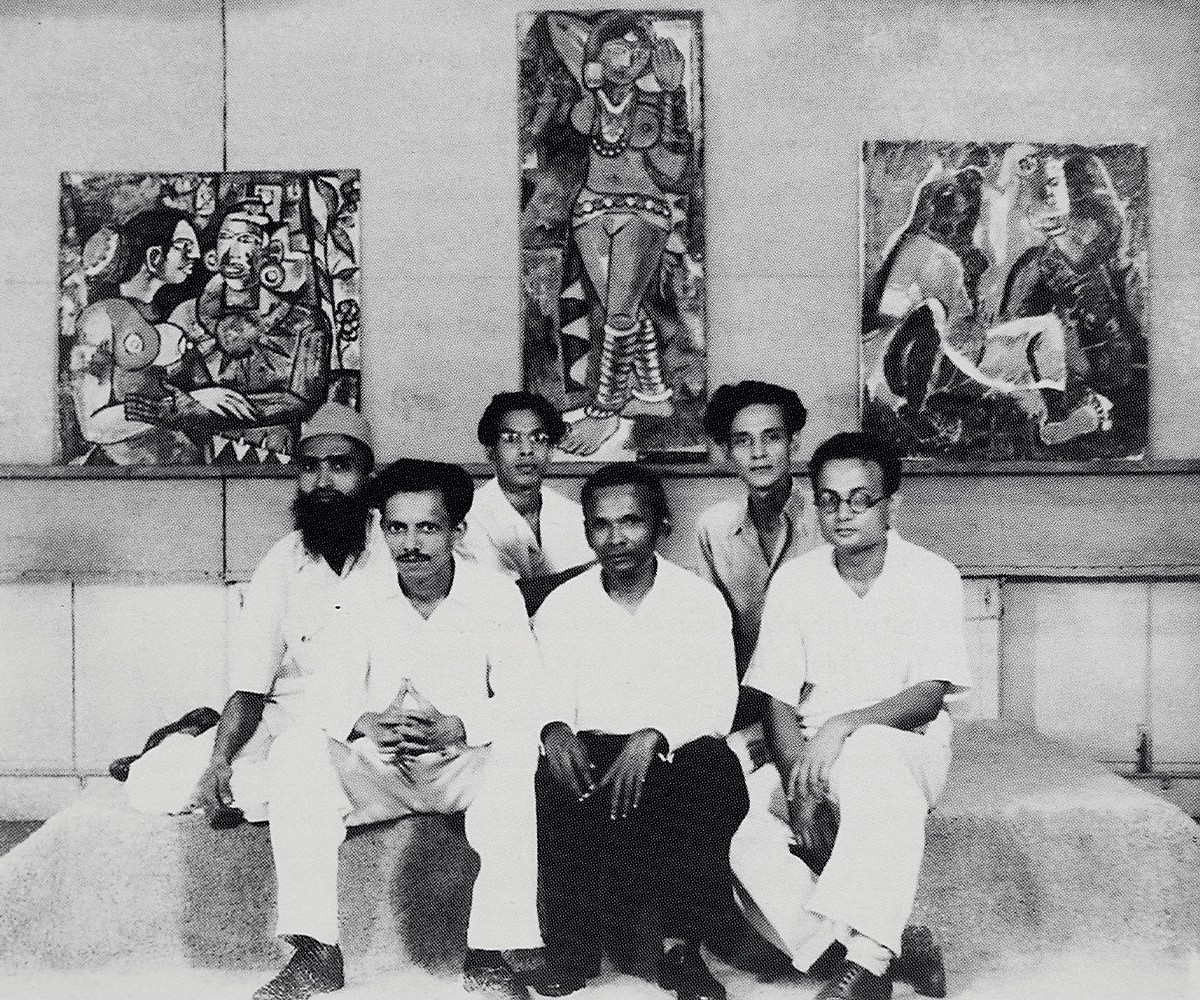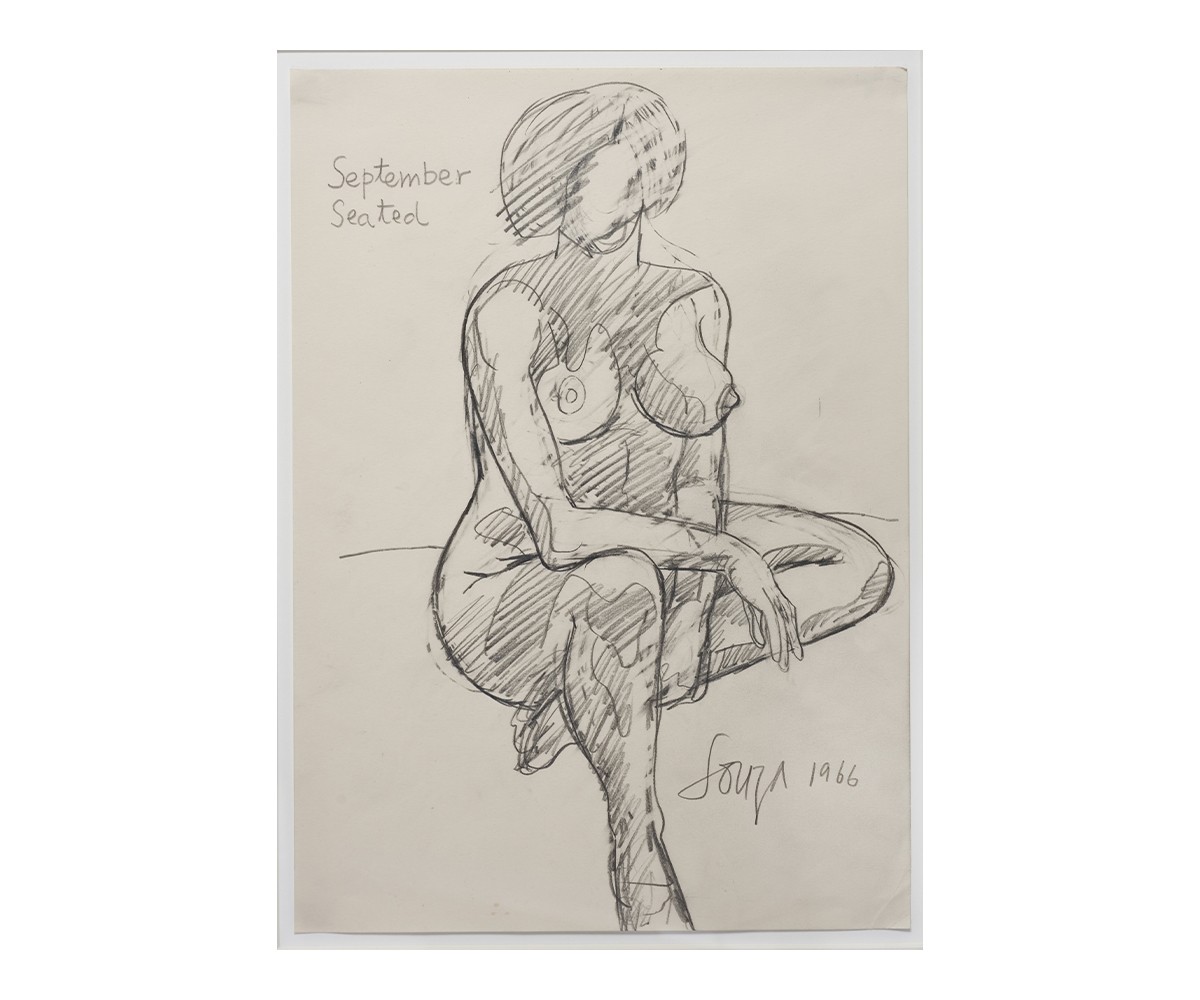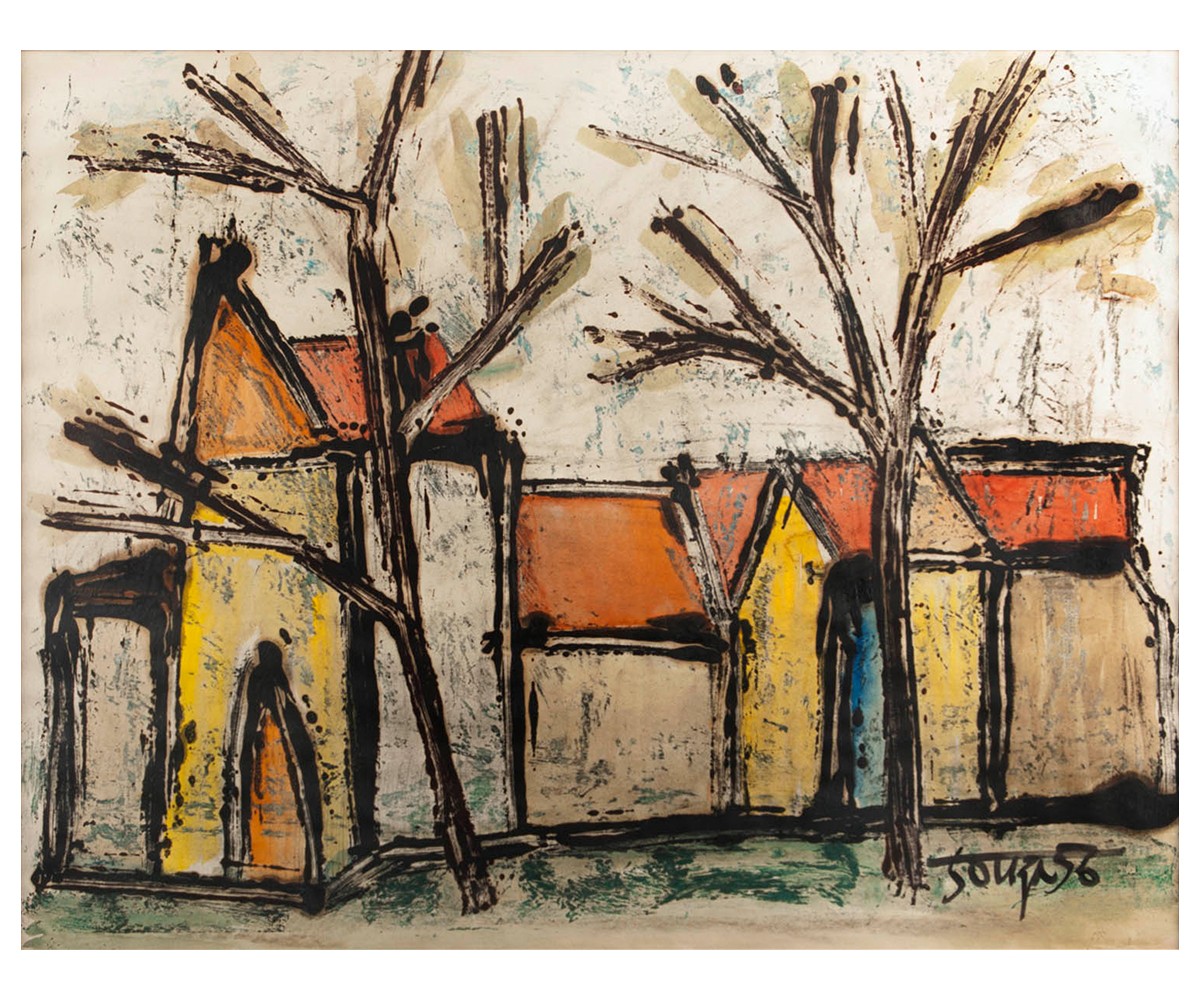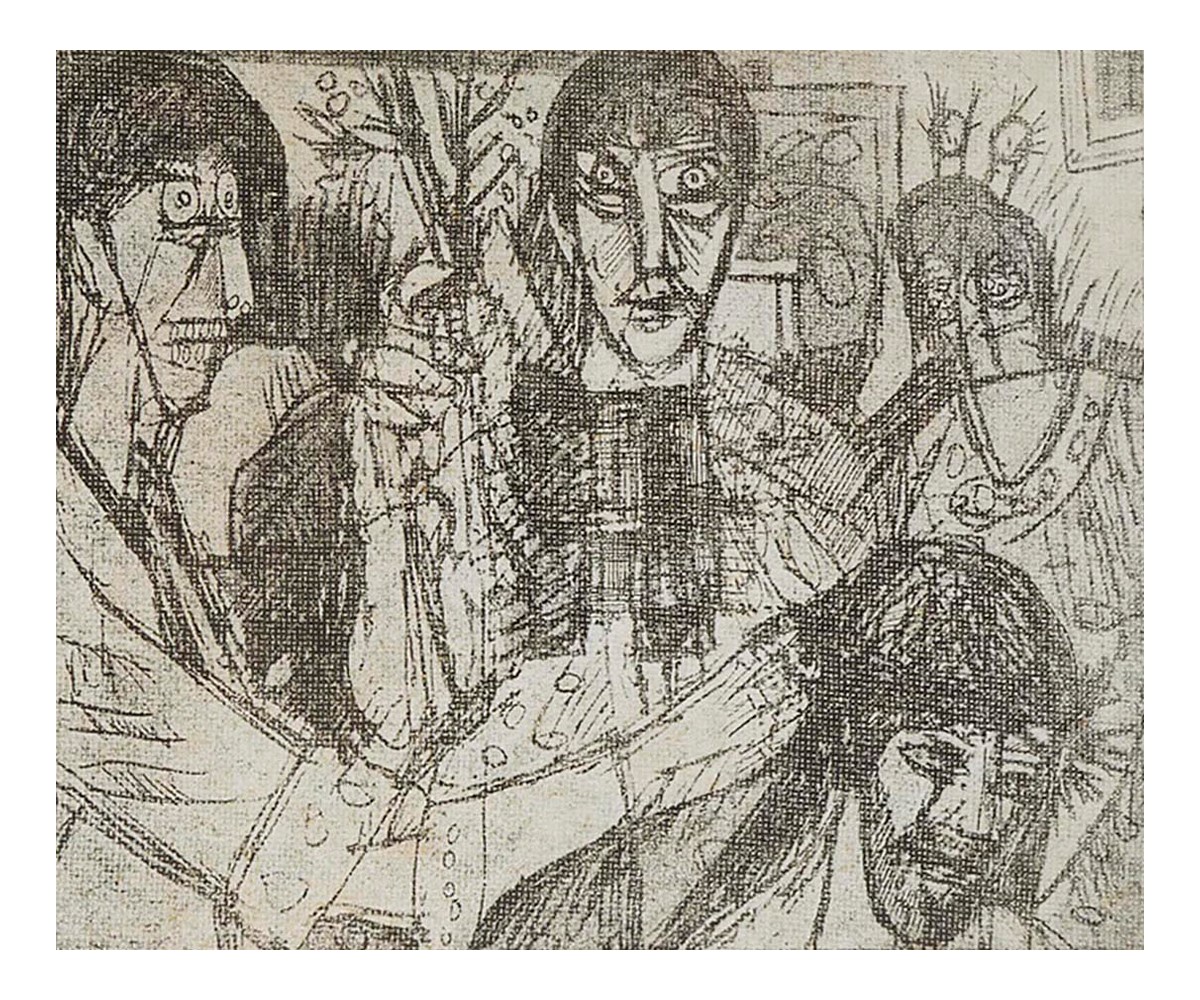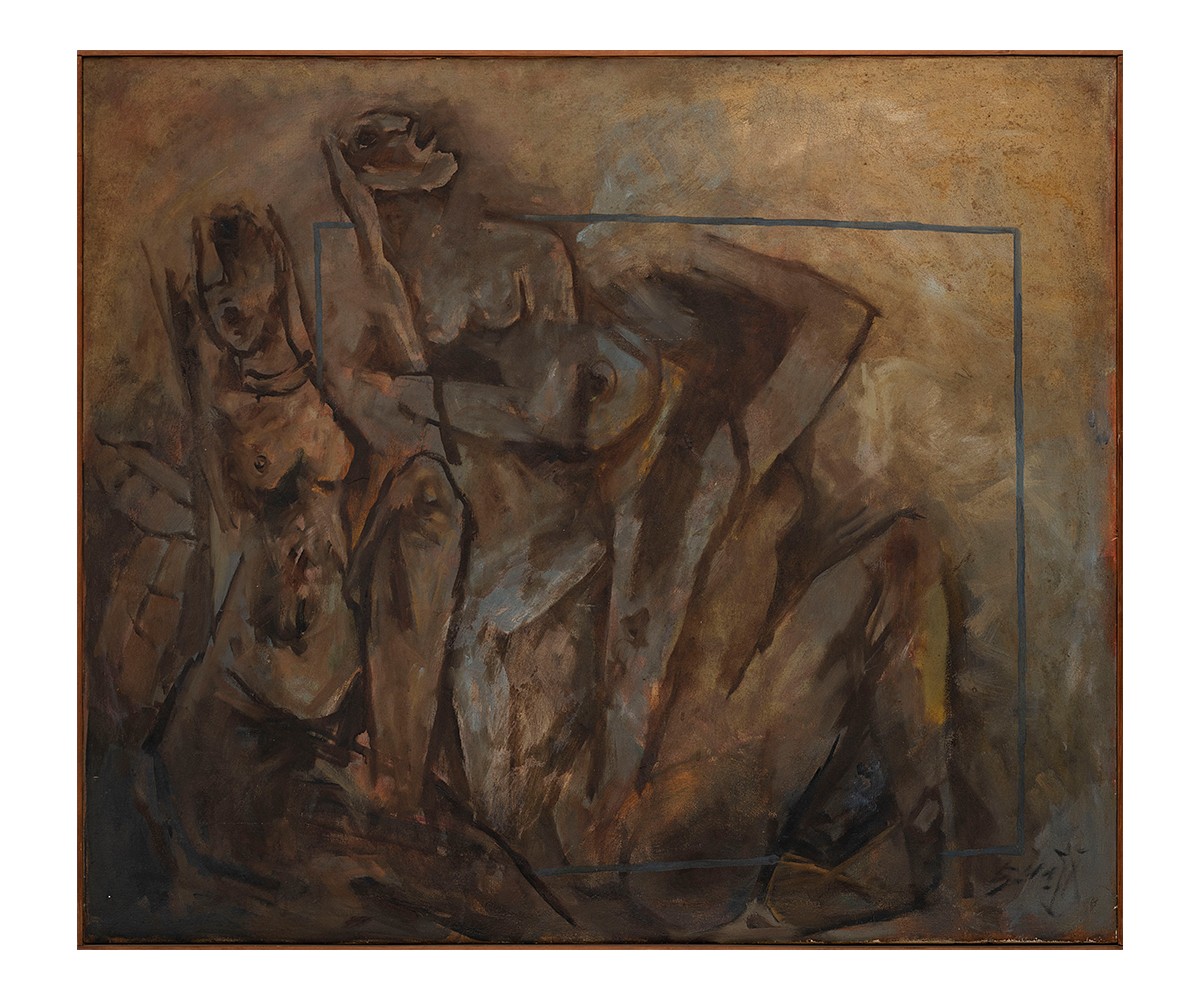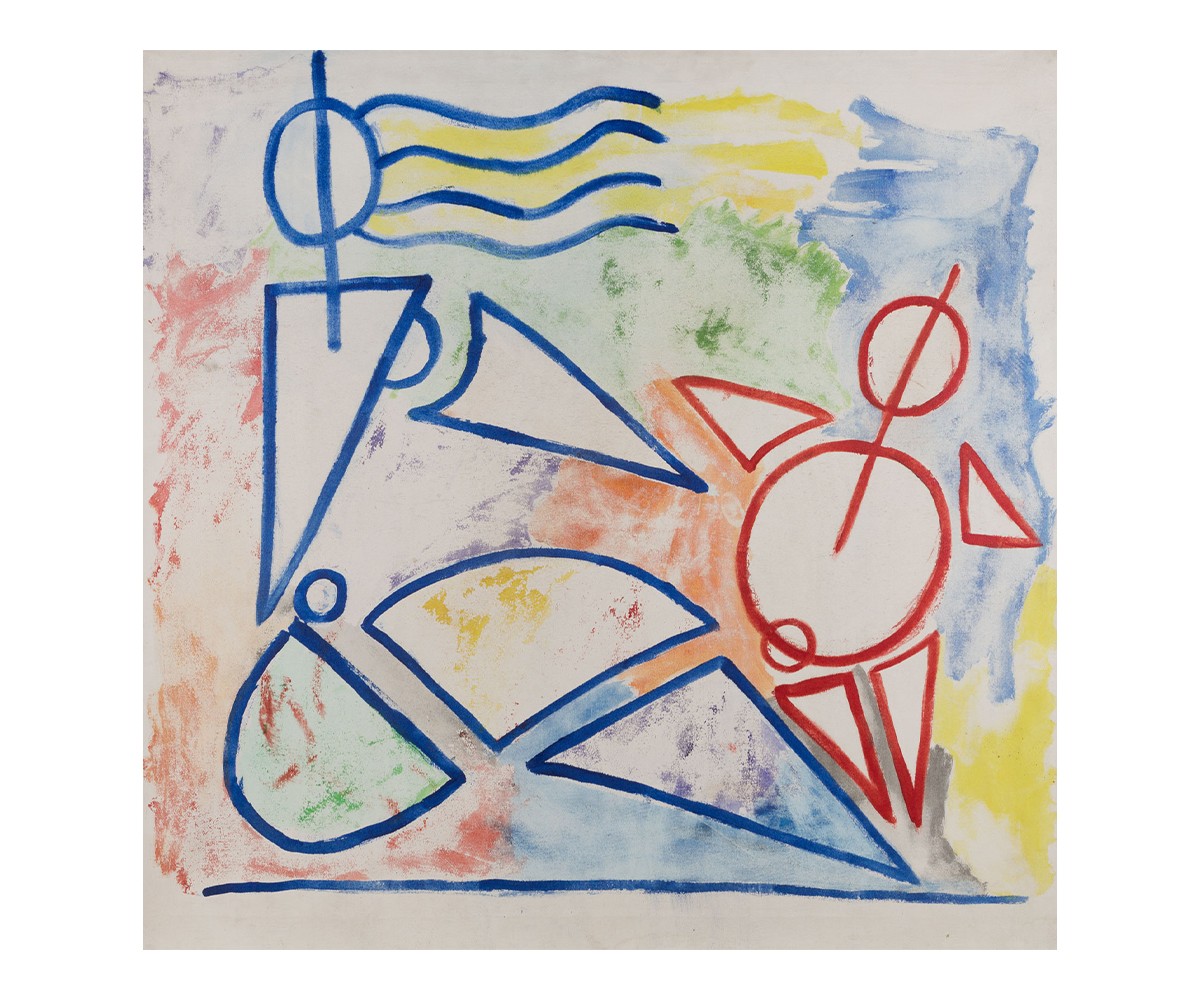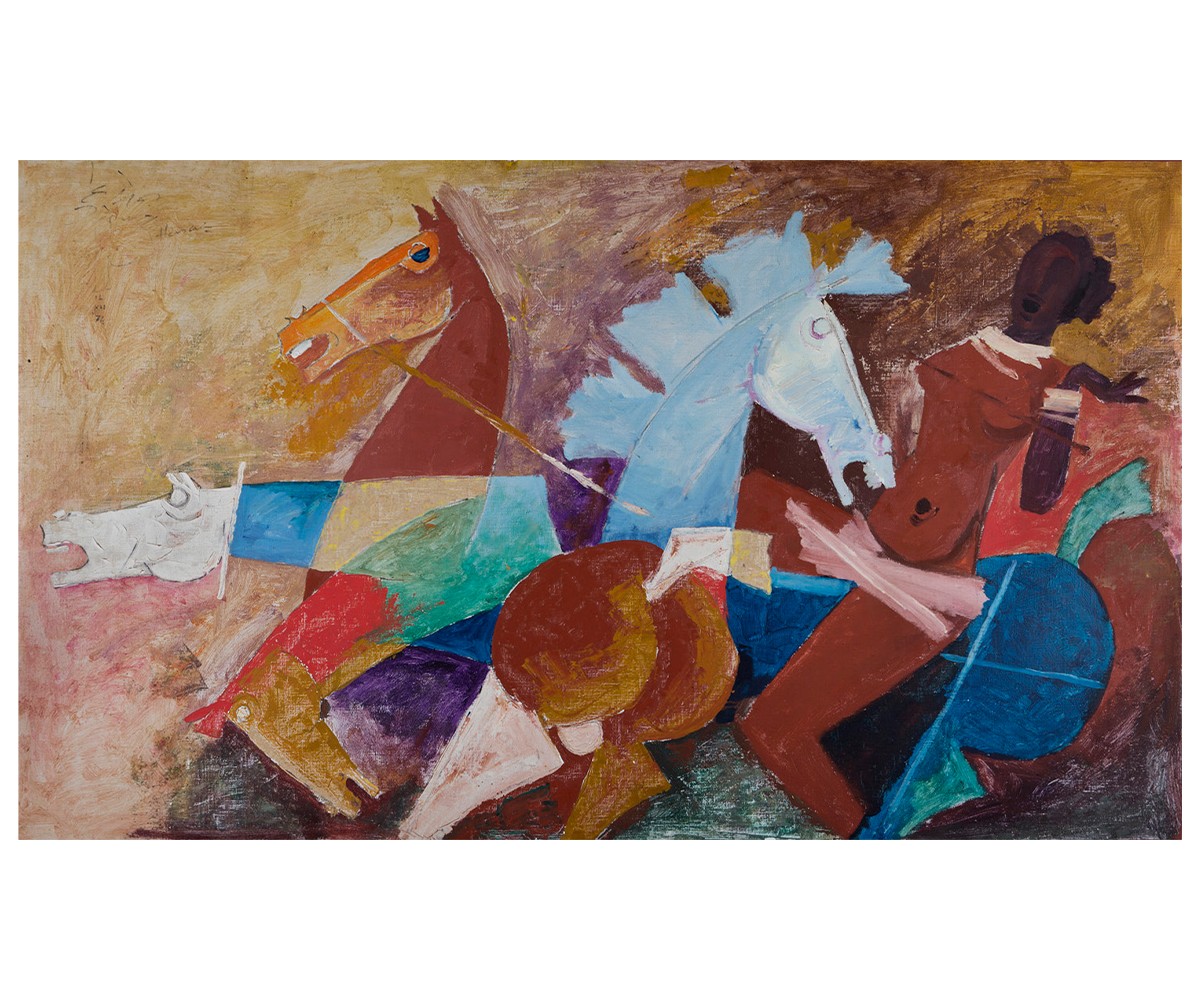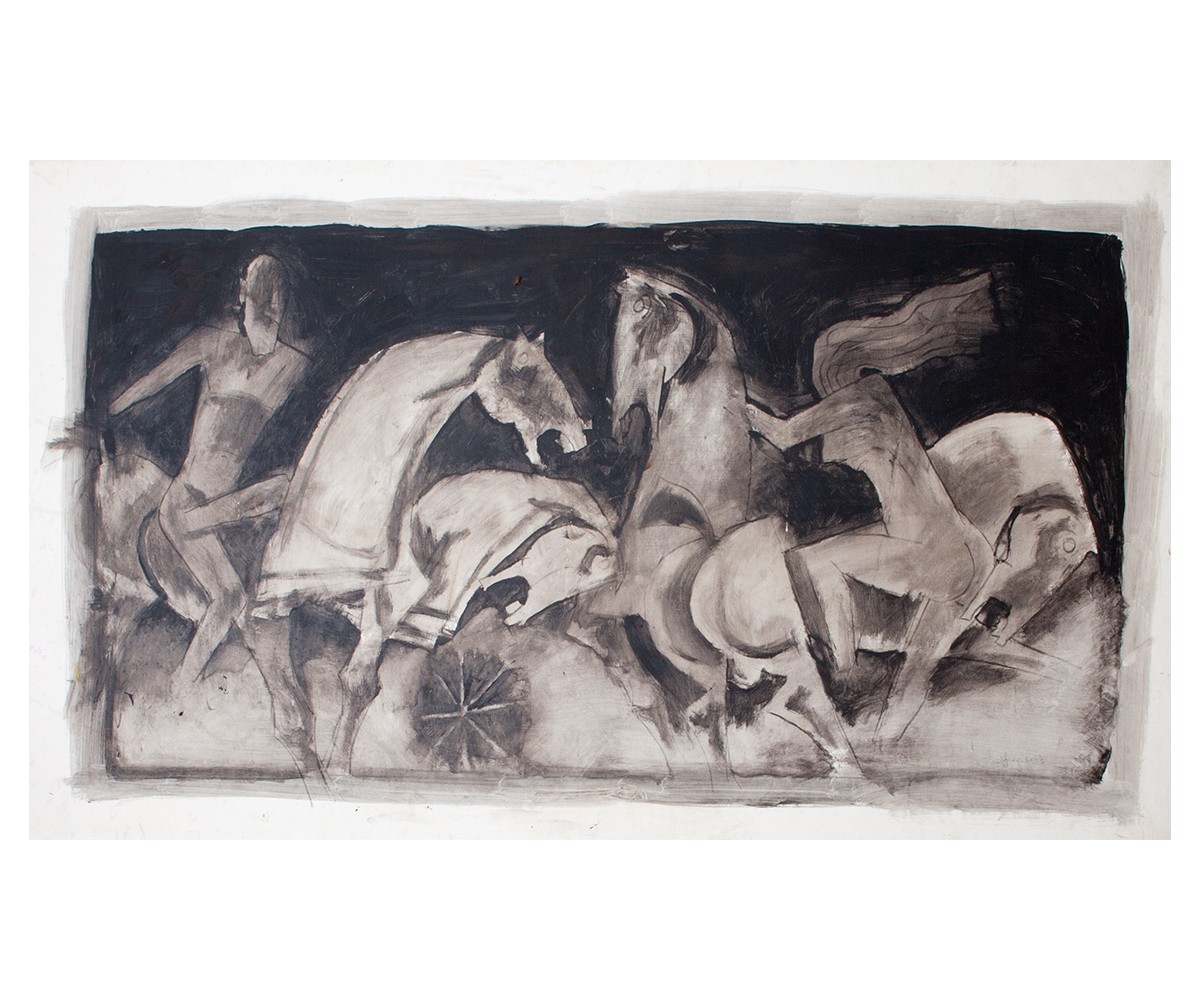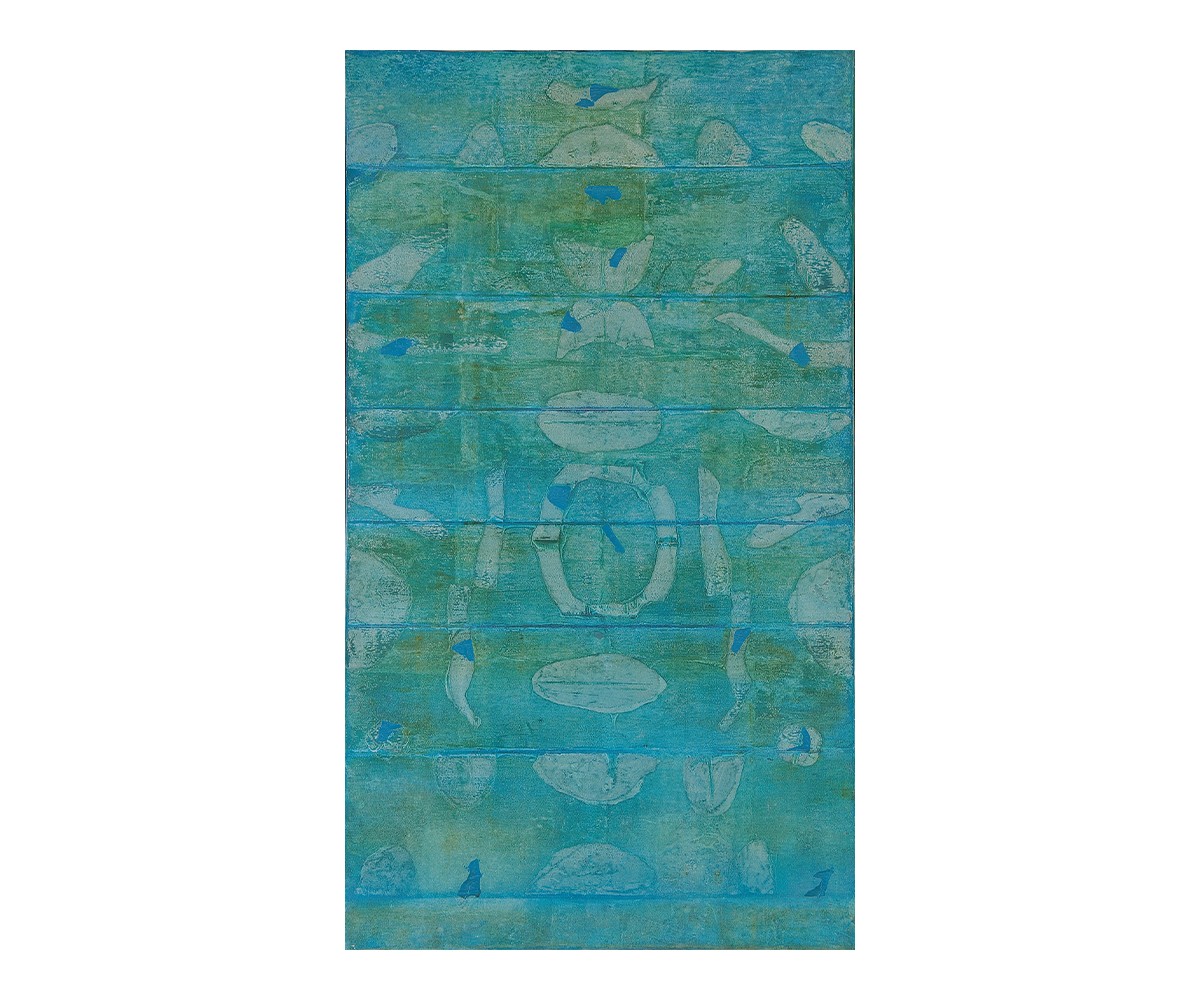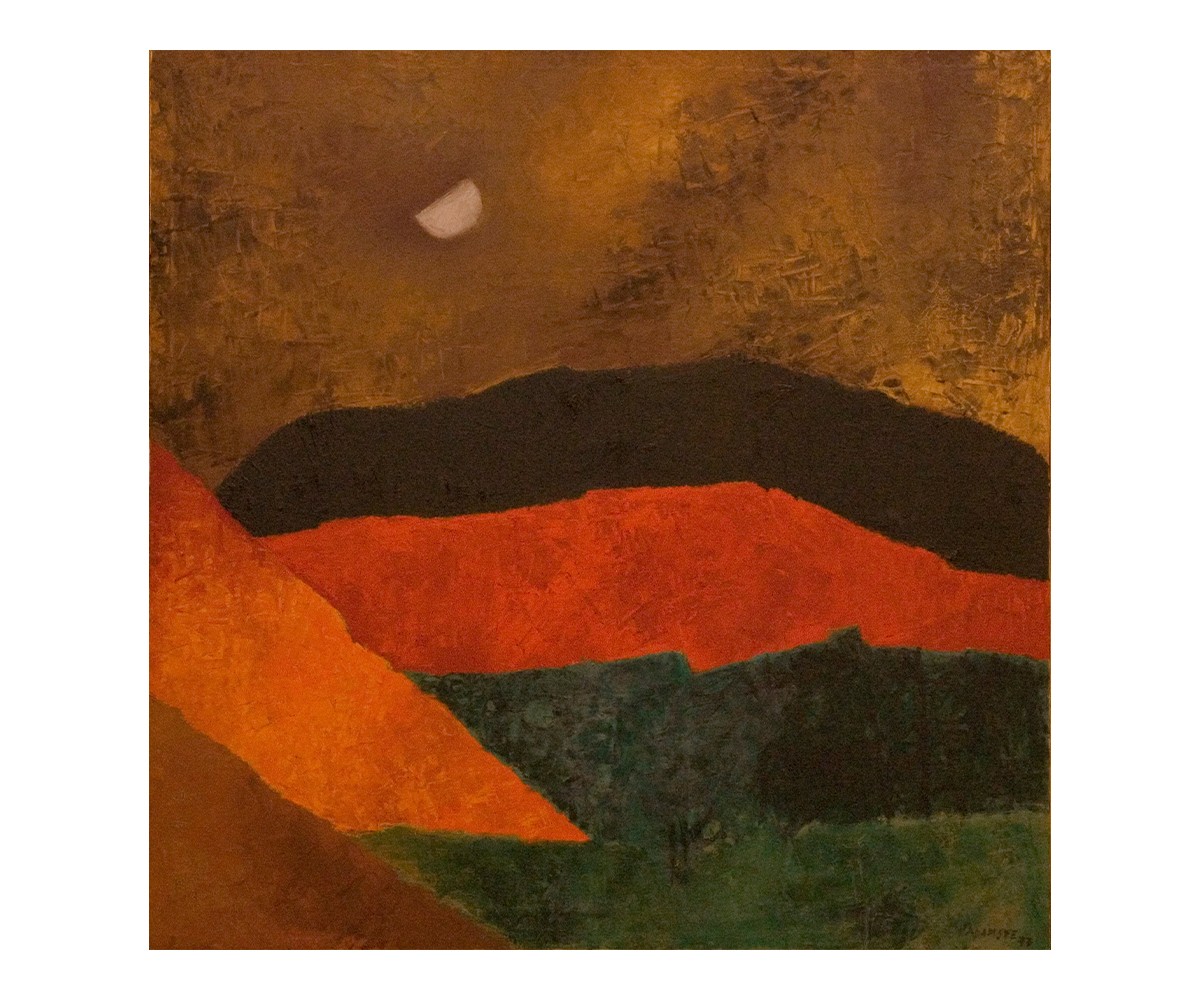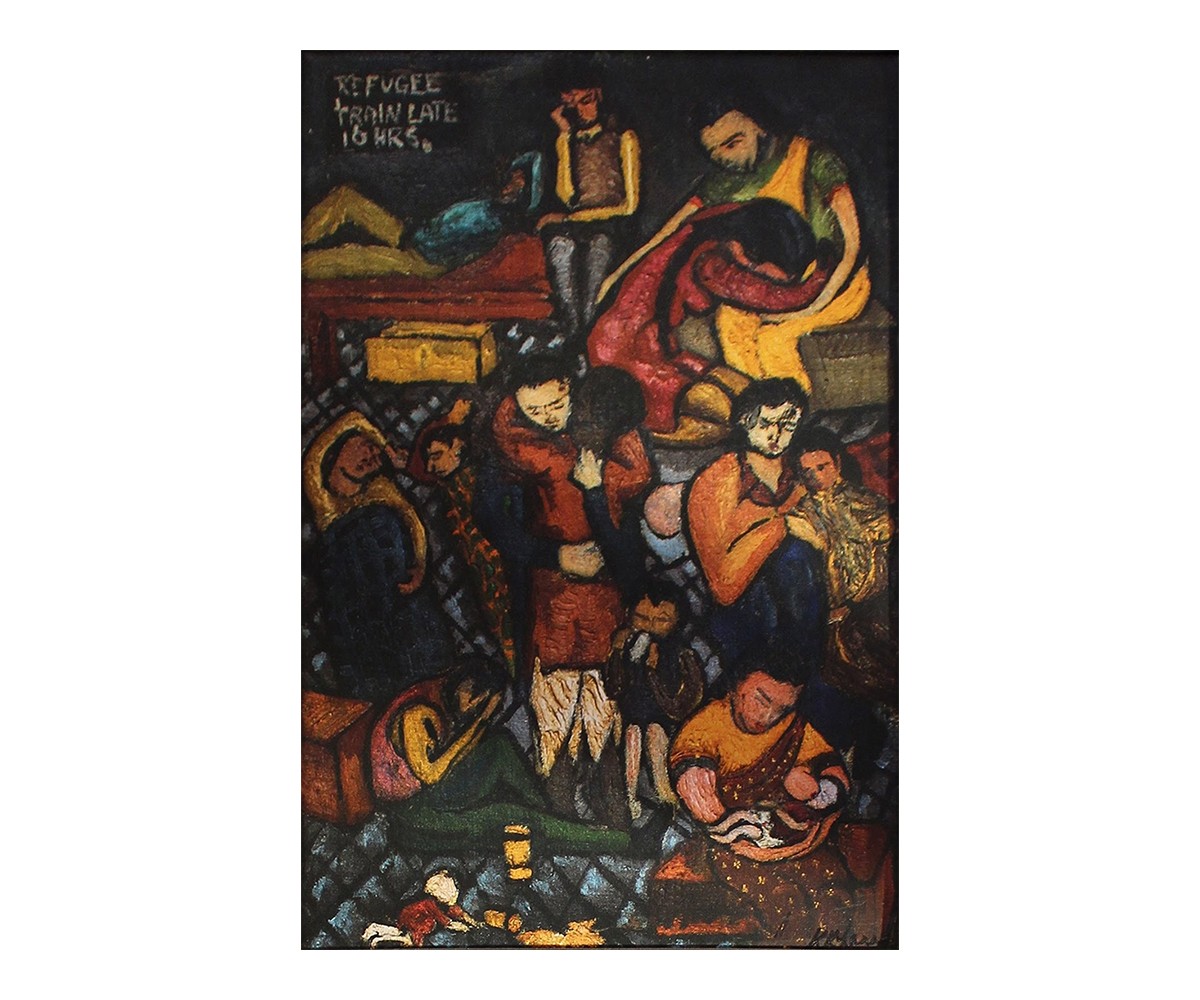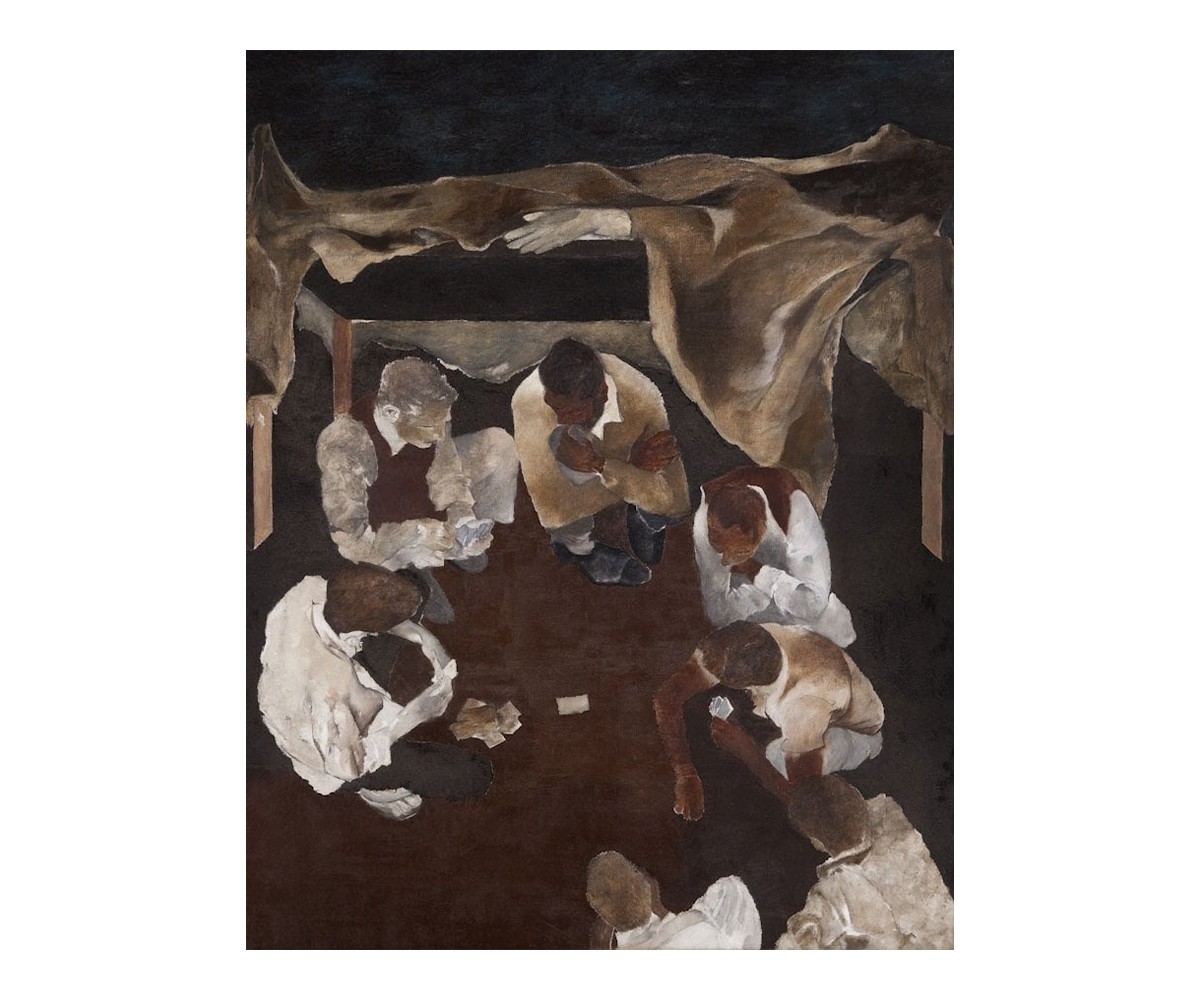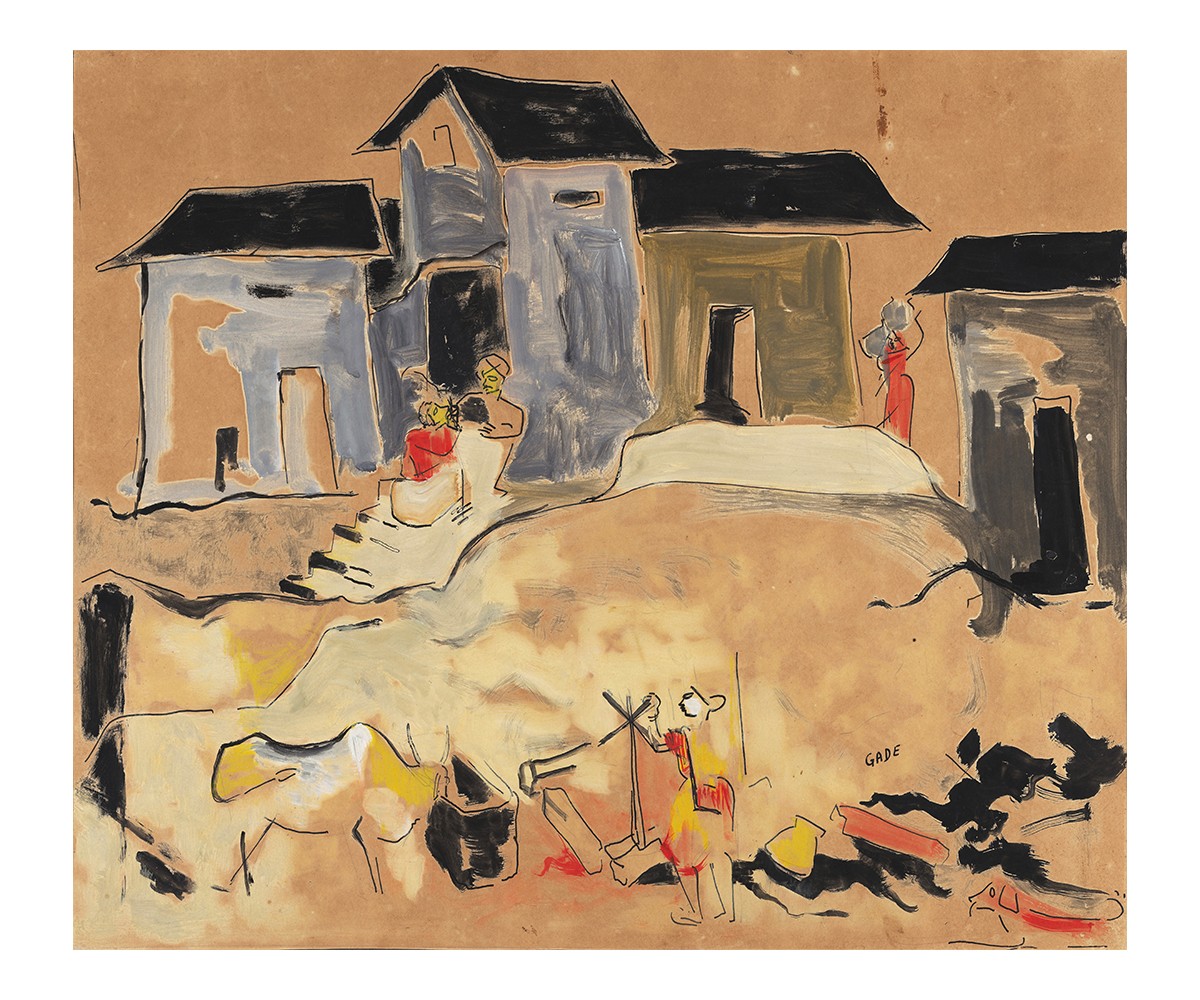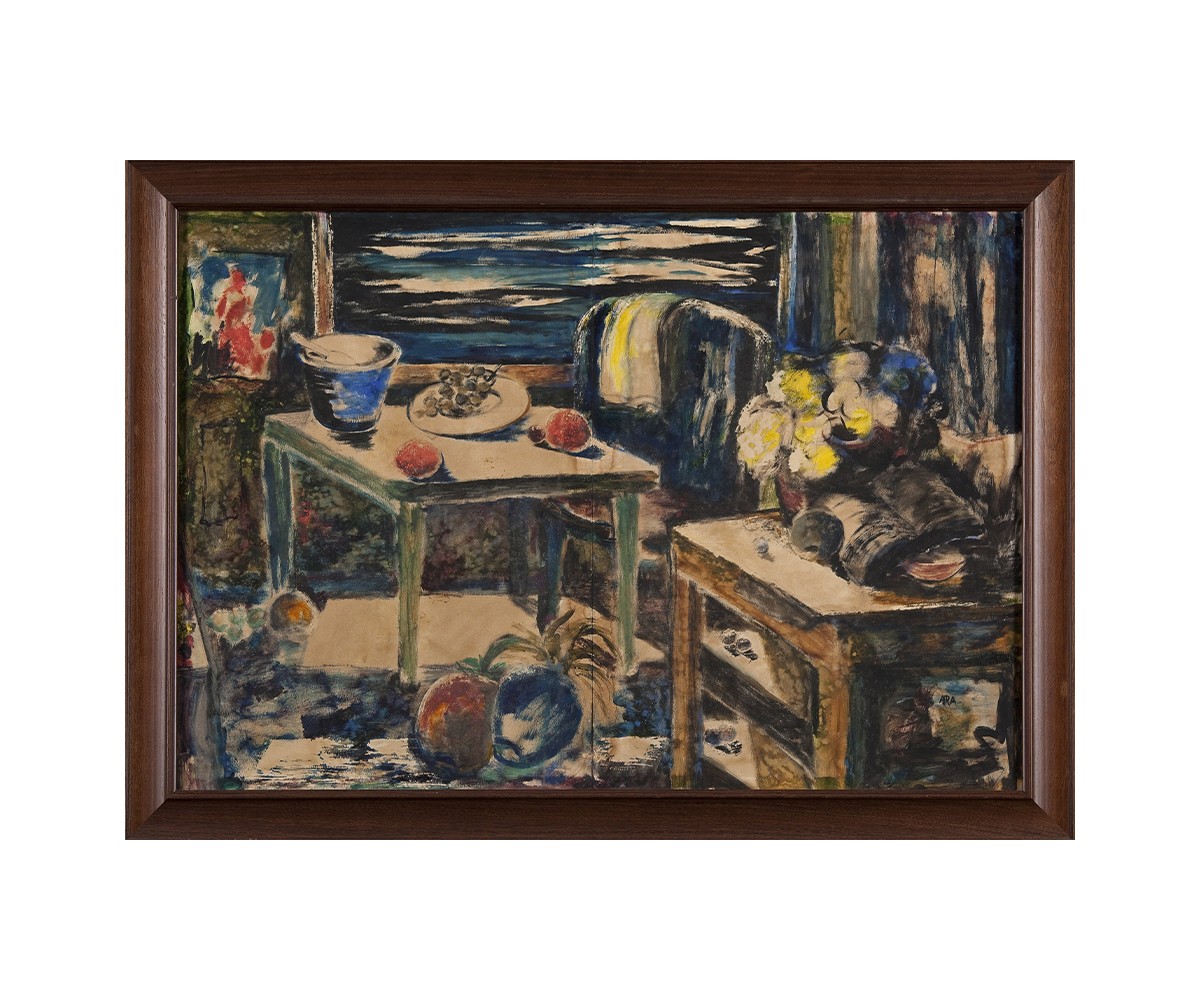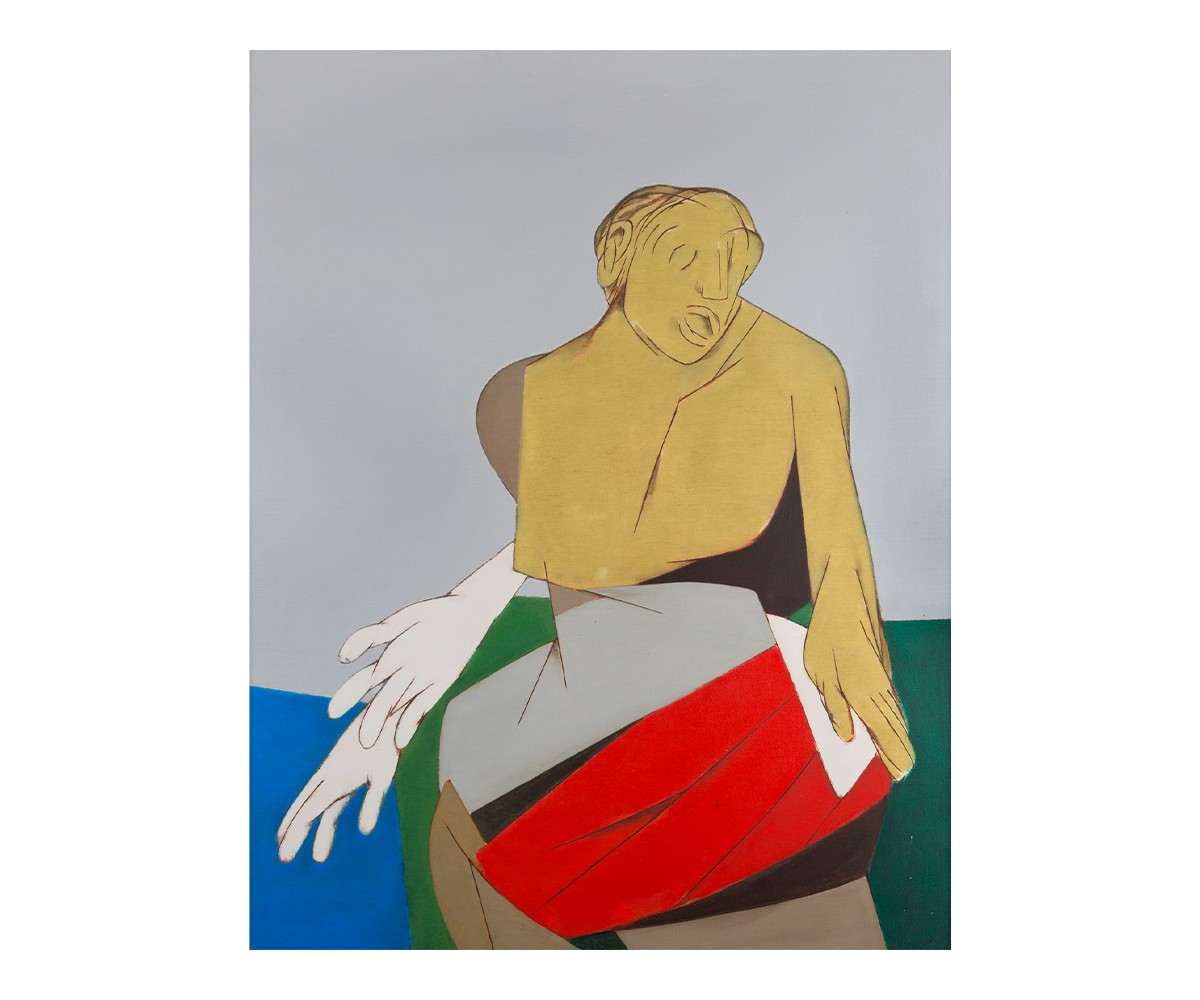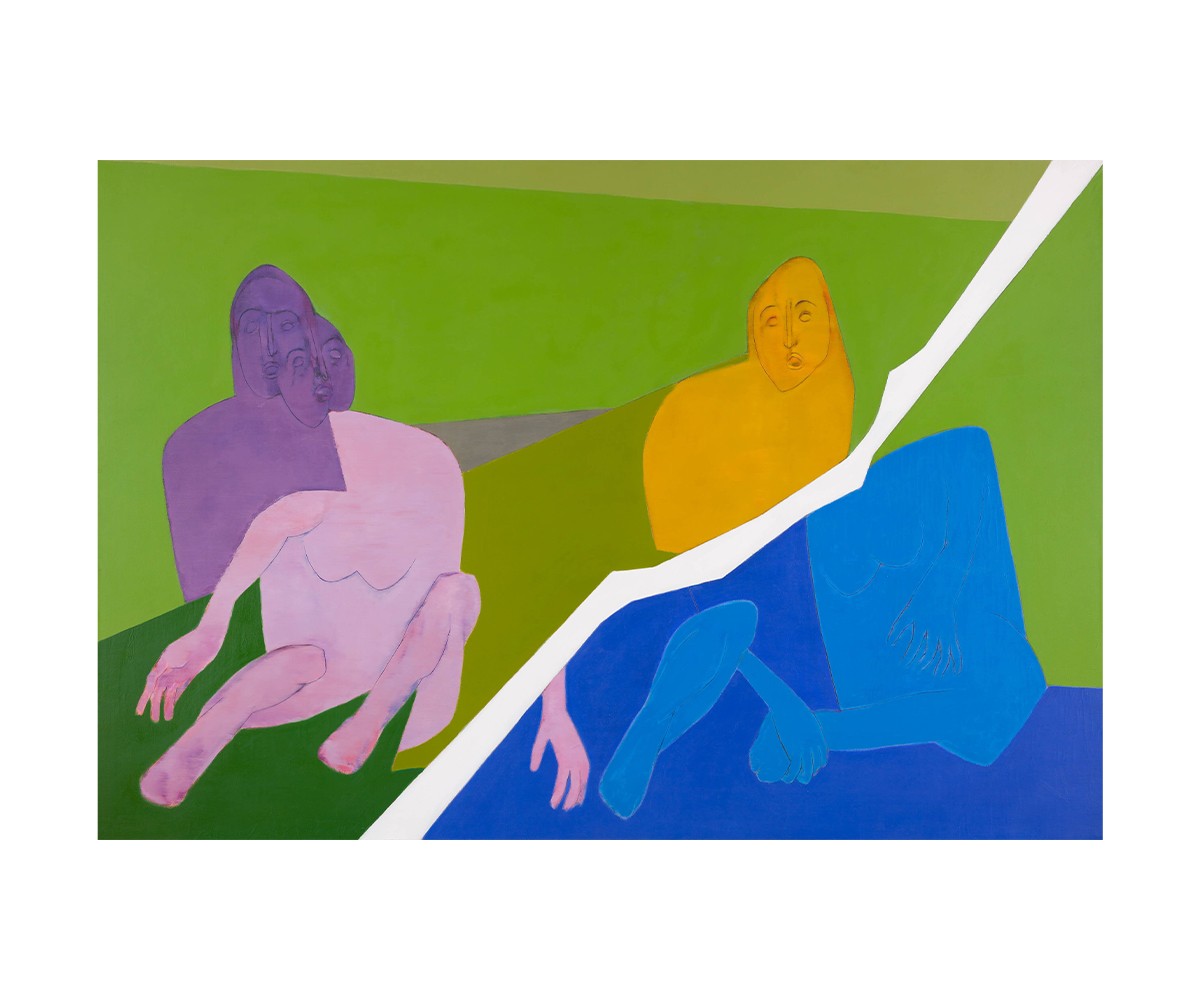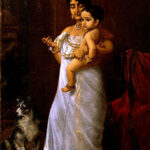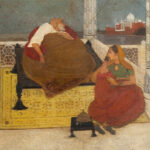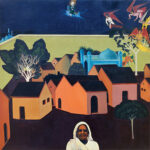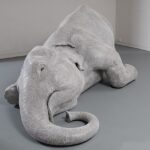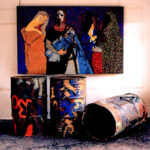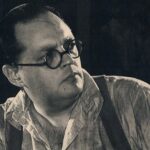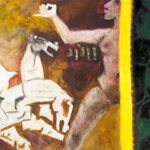The Bombay Progressive Artists’ Group
1947–1956
Formed in the year of India’s independence, the Bombay Progressive Artists’ Group (PAG) seeks to create a visual vocabulary of Modern Indian art that encapsulates the ideals of secularism and pluralism that the newly independent country aspires to. The founder-artists, FN Souza, SH Raza, MF Husain, KH Ara, HA Gade and SK Bakre, come from diverse social and religious backgrounds and also seek to distinguish their art from the influences of Western academic structure in Indian arts education and the Bengal School. Over time, the group expands to include VS Gaitonde, Akbar Padamsee, Krishen Khanna and Tyeb Mehta, but is relatively short-lived, dissolving in 1956, after a few of its founder members leave for Europe.
While the group and its member artists will be acknowledged as significant contributors to India’s Modern art landscape, critics will also question the valorisation of their legacy, particularly from the frameworks of secularism and themes of Modernism in Indian painting. The works of some of the artists of the group, such as Raza, Gaitonde, Husain and Souza, will see immense commercial value at auctions, often selling for record prices. Other founder members including Ara, Gade and Bakre will remain less well known.
Bibliography
Dalmia, Yashodhara. The Making of Modern Art: The Progressives. New Delhi: Oxford University Press, 2001.
Kapur, Geeta. When Was Modernism: Essays on Contemporary Cultural Practice in India. Chennai: Tulika Books, 2000.
Small, Zachary. “The Plurality and Progressivism of India’s Modern Art Revolution.” Hyperallergic, October 29, 2018. Accessed October 16, 2023.
Feedback 
This entry appears in
Art in South Asia
Visit Timeline
Associated Timeline Events
First Published: March 11, 2024
Last Updated: August 5, 2024



